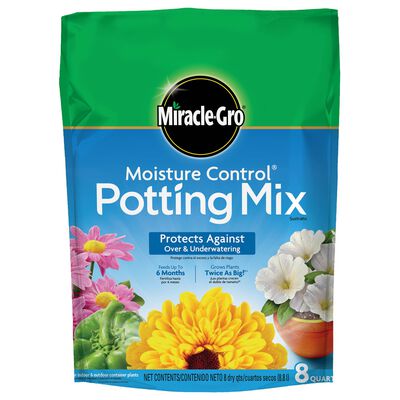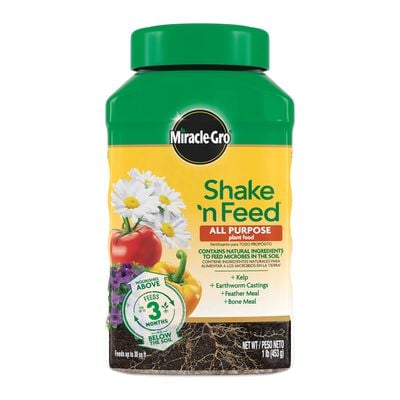
5 Reasons to Grow in a Raised Bed
What's so great about raised bed gardening? A lot! Check out these compelling reasons to plant your next garden in a raised bed.
Maybe you recently spied a gorgeously planted raised garden bed on a friend's Facebook feed, or perhaps a coworker was enthusing about her new raised bed. You're left wondering: What's all the fuss about? Allow us to explain with these 5 reasons raised bed gardening is worth all the buzz.
1. You know your plants are getting top quality soil.
Having good soil is crucial for gardening success, and in a raised bed you have complete control over it. Instead of settling for what Mother Nature has decided to give you in-ground, you simply fill your bed with Miracle-Gro® Raised Bed Soil. It's premixed, so it's the ideal weight and texture for growing big, beautiful plants. And you can rest easy knowing that you don't have to worry about battling soil-borne disease or too much clay or poor nutrition—all concerns when you're growing in-ground.
If you already have a raised bed and don't plan on replacing the soil, add Miracle-Gro® Refresh™ Soil Revitalizer to your old soil. When used as directed, it will help replenish depleted nutrients, renew water retention, and restore soil structure so your plants can thrive.
2. You'll score a longer growing season.
In spring, you can't plant until soil is warm enough. Guess what? The soil in raised beds warms up more quickly than in-ground soil, which means you can plant your garden sooner. You can also grow and harvest plants well into fall (and even winter, if you live in parts of the South) by covering the plants in your raised bed garden with a frost blanket.
3. You can grow more.
Traditional in-ground gardens are planted in rows, but who wants to be traditional? In a raised bed, you can place plants more closely together because you don't need walking space between rows. That means more growing space for you! Take bush beans, for example. Instead of planting seedlings 8 inches apart in rows 18 inches apart, you can just plant them 8 inches apart—in any direction. That will still give the roots plenty of room to grow. For an even bigger harvest, start with vigorous Bonnie Plants® and feed them with nutrient-filled Miracle-Gro® Raised Bed Plant Food. When used as directed, that winning combination of Miracle-Gro® Raised Bed Soil and Miracle-Gro® plant food with your Bonnie Plants® will lead to 3 times the harvest over a growing season versus unfed plants.
4. You can customize your garden.
Here's one more seriously cool thing about a raised bed garden: You can design it to fit your own unique style and personality. Are you the artsy type? Your raised bed could be built out of reclaimed stone and decorated with sea glass. More the rugged sort? Yours might be made out of cedar timbers and look a little more utilitarian. Not ready to commit? A temporary bed made with baled straw as walls could work for you. Our point? It's all about you!
5. You'll have less work to do.
Remember how we said you could leave less space between plants? Well, that means a big "less" for you, too: less time you have to spend doing garden chores. See, since the plants are a little closer together, the leaves of many of your plants will touch, which will help shade the soil so you may not have to water as much. It also means less room for weeds to squeeze in. Plus, remember all that beautiful new soil you added to the bed? No weed seeds there, unlike many in-ground beds. Bonus hint: If you put mulch around your plants (a common practice for folks who grow in raised beds), you'll end up blocking much of the sunlight the weeds need to grow, making it that much harder for them to break through. Yep, this is definitely a case where less is more—less work, more you time!


